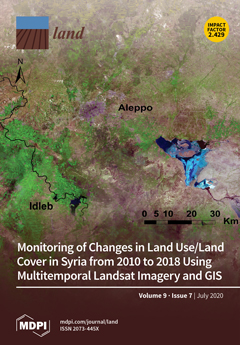The wildland–urban interface (WUI) occurs at the intersection of houses and undeveloped wildlands, where fire is a safety concern for communities, motivating investment in planning, protection, and risk mitigation. Because there is no operational definition of WUI based on where fires in fact
[...] Read more.
The wildland–urban interface (WUI) occurs at the intersection of houses and undeveloped wildlands, where fire is a safety concern for communities, motivating investment in planning, protection, and risk mitigation. Because there is no operational definition of WUI based on where fires in fact have occurred, I used fire occurrences to objectively establish a definition of WUI, while examining spatiotemporal changes, for the conterminous United States. I applied four classifiers, but focused on C5.0, which produced equivalent sensitivity (0.87 to 0.91 at prevalence = 0.67) and generated a ruleset that indicated housing density was the preferable basis for definitions. Fire occurrences overall were predicted for housing densities <100 houses/km
2 with potentially low (≥10%) thresholds for percent vegetation cover, varying by housing densities and models. A generalized guideline according to classifications is continued use of existing definitions for wildlands of <6.17 houses/km
2 and a low-density intermix class of 6.17 to 50 houses/km
2. Departing from other definitions, the medium-density class encompasses 50 to 100 houses/km
2 and the high-density class is 100 to 200 houses/km
2. Interface, or suburban, communities are 200 to 400 houses/km
2. Implications of refining the definition include a larger critical area classified as greater fire risk (low and medium-density WUI below 100 houses/km
2) at 855,000 km
2 during 2010, and; therefore, incorporation of more communities and homeowners into a high-risk status. The low-density class had greatest risk of fire exposure, but the medium-density class contained a greater concentration of houses. Classification of the wildland–urban interface or intermix based on realized fire occurrences provides an objective foundation for identifying residential densities at risk of fire exposure, which permits disclosure of risk, prioritization of resources to communities and homeowners with greater wildfire exposure, development of strategies for communities to coexist with fire, and responses to reduce vulnerability.
Full article





